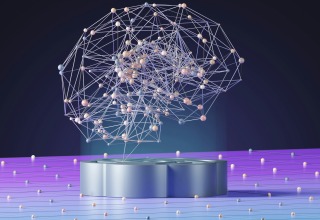Autism rates have tripled over the last 16 years. Although the causes and resulting manifestations of Autism Spectrum Disorder (ASD) are quite varied across individuals, there is no one treatment.
Stem cell therapy for autism might provide some remedy for some ASD symptoms, as emerging studies indicate that the therapy might address biological functional dysfunctions underlying ASD symptoms.
Overview of Autism Spectrum Disorder
ASD development is ascribed to several underlying elements, which include genetic markers as well as environmental elements and immune disorder problems. They range between different kinds of symptoms that include:
- Social communication problems
- Routines
- Exaggerated responses to sensory input
Symptoms are mostly handled with medications, behavioral therapies, and stem cell autism treatment, but I haven’t been able to find the root of autism spectrum disorder.
What Are Stem Cells?
Stem cells are undifferentiated cells that specialize through development to become a variety of cells, which is the unique feature of stem cells. These cells show the ability to self-renew and to tissue regenerate, making them attractive to use as a source for treatment.
While not offering much differentiation, adult stem cells reside in materials such as bone marrow and fat tissue and repair damaged parts. IPSCs have been obtained through the process of transforming adult cells to work as a functional counterpart of embryonic stem cells which provides a less controversial option.
MSCs are found in bone marrow, tissue, and fat because they are naturally immunomodulatory with anti-inflammatory activity.
Why Stem Cells Are Promising
There is a strong reason why stem cells have the ability to be used for ASD treatment. Their biological properties include the prospect of:
- Specifically, MSCs have a propensity to control immune system reactions in the cells of stem cell origin.
- Known as stem cells, they have the ability to increase both the propagation of new nerve cells and the healing effect in damaged brain tissue.
- Better blood flow and oxygenation occur after better vascular brain function, which is known to improve the brain’s cognitive function and autism spectrum disorder symptoms.
The Intersection: Stem Cells and Autism
Theoretical Mechanisms
There are multiple scientific explanations of how stem cells can relieve the symptoms of autism spectrum disorder:
- Medical experts have observed that many people who have ASD have ongoing brain inflammation. Against such inflammatory brain inflammation, however, MSCs have properties that can lower the inflammation.
- Tissue repair via the use of stem cells is being considered for neurons because this may assist the repair of nerves and increase synaptic patterns to facilitate a better connection between neurons.
- Such stem cell administration is capable of controlling immune reactions and microbial functions, and this could result in improved neurological development.
Dysfunction of the energy production mechanism in brain cells is the case with many ASD patients who show mitochondrial instability. Stem cells have the potential benefit of improving cells’ energy production metabolism.
Scientific Evidence:
Stem cell treatment for ASD research is experimental because many studies show the treatment’s possibility of effectiveness.
- Research in autism animal models shows that stem cell transfers will enhance intellectual performances with social capabilities, in addition to lowered brain inflammation.
- Preliminary medical trials in research involving clinical trials have shown that stem cell treatment improved communication among those with ASD, as well as decreased repetitive behaviors and increased social interaction among ASD patients.
- There are many barriers in research because many studies comprise a small number of participants and do not use placebo groups or have variations in treatment, which results in unclear results.
Current Research and Developments
Various therapeutic techniques, such as those at Swiss Medica, are studied by scientists all over the world to conduct active stem cell therapy for ASD.
- MSCs are undergoing several trials on their therapeutic efficacy of ASD symptoms along with the MSCs obtained from adipose and bone marrow tissue.
- Scientists create individualized autism treatment with stem cells by designing therapies that use ASD patients’ genetic and immune characteristics to improve the safety and efficacy of the treatment.
The research discusses how there is the possible effect of treating stem cells along with behavioral therapies and diet or pharmacological treatments.
Ethical and Regulatory Considerations
The use of stem cells for ASD raises several ethical and regulatory challenges. The complexity of clinical evaluations and treatment results for the patients is made difficult by the lack of standard operating procedures pertaining to sources, drug amount, and delivery protocols for stem cells.
However, clinical testing of stem cell therapies is necessary to ensure wide adoption of these therapies which requires such approvals from regulatory authorities like the Food and Drug Administration.
Potential Impact on ASD Treatment
Stem cell therapy for autism may be medically feasible, and such a treatment strategy may revolutionize the way the disorder is treated.
- Social as well as cognitive results improve with early administration of stem cells in the initial stage of intervention.
- Stem cell therapy treatment allows patients to achieve positive outcomes and reduce their symptom intensity.
- Finally, stem cell therapy will enter a new therapeutic era once we can handle ASD biological defects at their core rather than treating observable symptoms.
Currently, stem cell therapy is out of reach for many because the price is high, and it is experimental in a way that restricts its availability to the population.
Conclusion
ASD symptoms can be treated by stem cell treatment, which is still an experimental approach. As more data become available, autism treatment with stem cells may serve as a new frontier for the treatment of autism, bringing new hope to the autism ‘family’ and those who care for them.




















